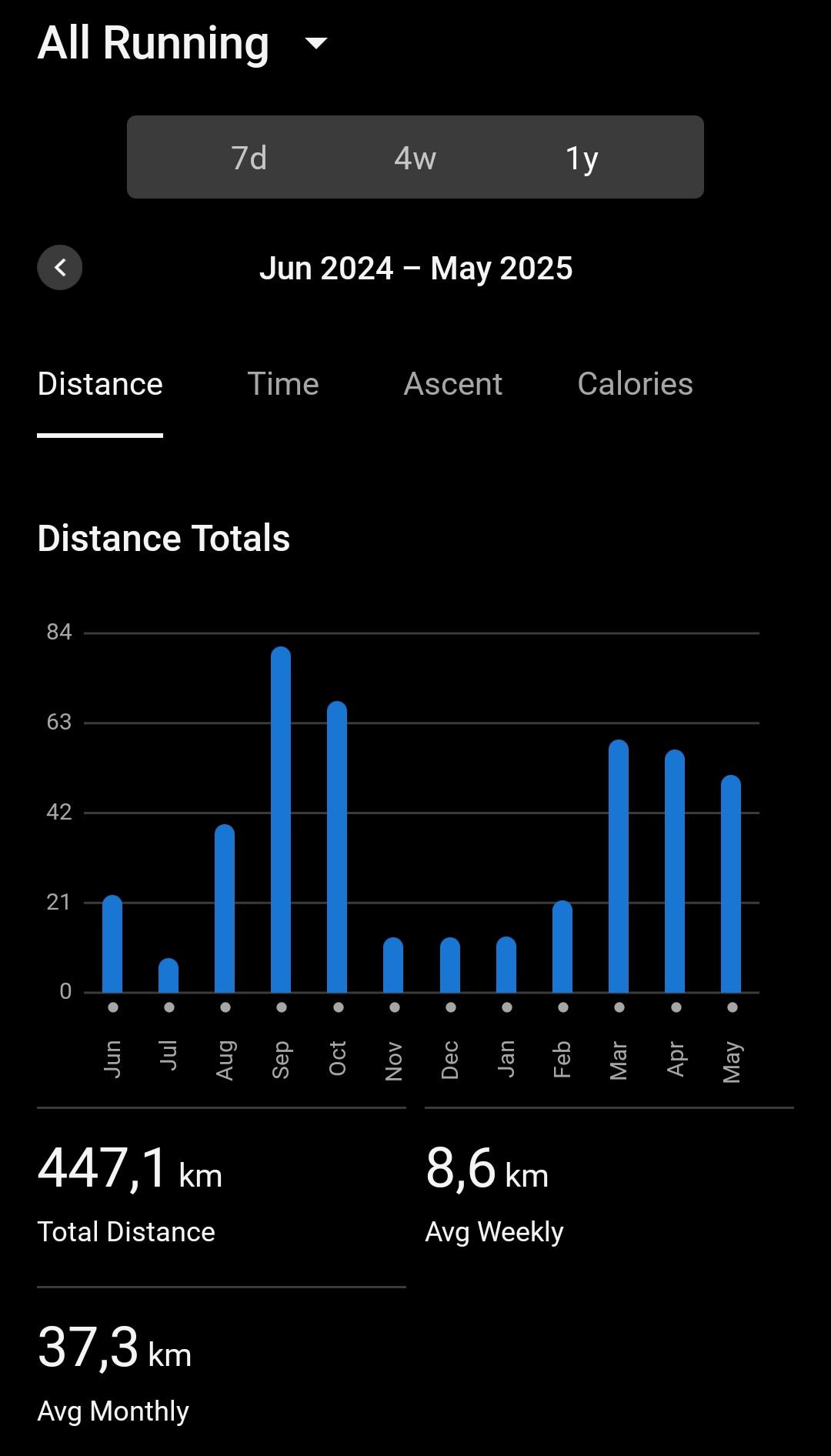You might not know this but a lot of the work I do has me sitting behind a screen. More standing these days thanks to standing desks (or my awkward arrangement of chairs on top of tables to replicate a standing desk).
We're all more sedentary than any other time in history. We spend 8 or more hours staring at a computer screen, on our breaks we turn to our phones for entertainment. Then when we get home in our ‘downtime’ we binge-watch or doomscroll on our phones or ‘smart’ TVs. It's a vain attempt to ‘relax’—by staring at screens with different pixel arrangements than the ones at work.
Globally, individuals now spend an average of 6 hours and 40 minutes per day on internet-connected devices, amounting to approximately 40% of our waking hours1. Broken down by age, daily screen time averages are startling2:
When considering the purpose, screen time is typically split between work-related tasks and leisure activities. Adults working remotely often clock 7–9 hours daily on screens for professional purposes3. Leisure time adds significantly to this, with adults averaging about 2 hours and 23 minutes per day on social media alone4.
Smartphones dominate our screen-time habits globally, averaging about 4 hours and 37 minutes daily5. Interestingly, older adults (particularly over 70s) have become significant online users, primarily engaging in activities like web browsing and emailing, nearly matching young adults in their digital engagement6.
This pervasive screen-centric lifestyle is not without consequences: increased screen time correlates with a host of health issues such as sleep disturbances, obesity, anxiety, and depression, particularly in adolescents7.
Our physical environment and entertainment encourages us to be behind screens, COVID became the catalyst for the trajectory we were heading towards. No matter how much we try to convince ourselves, the amount of time we spend on our butts, not moving, staring, zombified by all the dancing monkey content isn’t healthy for our mind or body. We've become the most cunning excuse machines to continue on our path of sedentary self-destruction. “I’m too tired,” I’m so worn out from my kids,” “I just want to relax,” “I want to switch my brain off,” “I don't want to think about all that right now,” “I feel like I haven’t had a break in years,” “I just wanna zone out.”
On and on it goes, one excuse after another, all the while we’re getting fatter, lazier and more unhealthy than ever. Mind, body, and soul. The terrible thing about all this is the acceptance. Everyone does it. It’s the social norm, so we allow ourselves to perpetuate the self-destructive inactivity. Reminds me of something I heard many times growing up,
If all your friends jumped off a cliff, would you do that too?
Everyone is dragging their slothenly behinds right toward the cliffs edge through sheer comfort, first-world excuses and, with irony of the highest order because they’re unfit. Many will delude themselves into thinking they’re fitter than they are in reality. Oh, you can walk to the shops unaided? Wow, elite athlete coming through! “I don’t want to look like a body builder,” “I'm mostly muscle already,” “I’m happy the way I am.”
With that out of the way, on to part 3.
Physical Health
Constant phone use is a sedentary activity, obviously. Hours slouched on the couch, at a desk, hunched over a glowing rectangle. It eats time. It eats the time you’d otherwise spend walking, cooking, actually chewing your food instead of inhaling it while reading Reddit arguments. It creeps in, then it’s got ya.
Over the past year of cutting back screen time, I noticed something weird: I started moving more. Not on purpose right away. I wasn’t counting calories. I tried that once, it’s too much effort. I just stopped losing hours to nothingness and started doing things. Moving around more. Standing while working. Cooking actual food. Being present with my kids more.
In late April 2024, I weighed about 84.8 kg. By December, I was down to 76.9 kg. No hardcore fitness plan, just less screen time. It stacks up. Not just physically, either. Psychologically, it shifted something. The less I lived in my phone, the more I lived in my body.
Correlation isn’t causation. Yeah, yeah. But you don’t accidentally drop 8 kilos during the same stretch you cut your screen time unless something else is shifting underneath. I didn’t just trip and, whoops, there goes 8kg! I cooked dinner more nights than I didn’t. I walked more. Played outside more. I wasn’t doomscrolling while the kids zombied out on tablets (that’s never been our thing anyway). I was there. Moving. Deciding. Less distracted, more present.
The proof is in the pudding with my recent Garmin numbers. From June 2023 to May 2024, I ran 174.1 km. That’s about 3.3 km a week. Decent, considering I wasn’t really paying attention. But compare that to June 2024 to May 2025: 447.1 km. That’s 8.6 km a week. More than double. Same person, same life. Just less time eaten by the void.
As with my other articles, my Garmin data backs this up. My overall step count wasn’t super different over time, but I logged workouts. Wrote about hitting 10k (running). By early 2025, weight crept back up slightly—81, 82 kg. But I felt better. Stronger. More balanced.

The little things added up. My back didn’t hurt as much. My posture improved. I swapped a few scroll-breaks for 5 minutes of stretching or squats. Not because I read it in a productivity book. Because it felt better. Less phone. More motion. Fewer aches. More energy.
Our bodies pay a tax for every hour we spend hunched over a screen. Forward head posture. Tight hips. Shallow chest breathing. Eyes strained from artificial light. Constant micro-tension in the neck, shoulders, jaw. It doesn’t happen all at once, it’s a slow erosion but when you notice it, you’ll really notice it. One day you realise your back’s stiff before noon, or your hip clicks every time you stand up, or you’re rubbing your eyes at 2pm like you’ve aged twenty years overnight.
Even cortisol (the stress hormone) sits higher when screen time goes up. Your brain doesn’t care that you’re “just scrolling.” It sees blue light and flashing inputs and reads it as threat, not rest. So while you’re lying on the couch “relaxing,” your nervous system is still buzzing like it’s stuck in traffic.
We dress it all up in fake productivity, pretend, make-believe. “I’m just clearing emails,” “I’m planning the week,” “I’m reading up on this thing.” Lies. I did it too. Pretended tapping through Jira was productive. It’s not.
Cutting screen time did wonders for me, it got rid of the illusion that I was doing something useful when I wasn’t. Forced me to ask myself, what is worth doing when there’s no feed to refresh? Cooking. Running. Sitting outside. Writing this, even. Real stuff. Physical stuff. What the hell do I care about watching other people’s lives?
There was a spike around October where my phone use jumped, weight loss plateaued, running dipped. Then January came, and I reset. Ran more. Ate better. Dropped weight again. Bought new jeans in February because the old ones didn’t fit anymore. Tangible result. And yeah, I credit it partly to less takeaway and more time in the kitchen. But mostly to not being glued to my goddamn phone.
Some Tips
Log your physical activity if you’re not already
Put your damn phone down—all that crap you’re convinced you can’t miss is totally missable and you won’t even miss it
Talk to a human
Adlerian Tips
Your mind and body are one system: movement boosts mood; better mood lowers craving for digital escape (and inversely, worse mood increases craving for digital escape and distraction-based activity)
Picture future you: each habit points to a vivid “future self” image—energetic, strong, present with family—so daily actions serve that goal
Play with your kids, work outside when you can, strengthen real life bonds—satisfy your need to belong in the real world not pixels
Tiny, winnable actions (two-minute moves) spark daily success hits that crowd out guilt-scrolling
Exploding Topics. Average Screen Time Statistics (2025). Retrieved from: https://explodingtopics.com/blog/screen-time-stats
Kutest Kids. Average Screen Time by Age Group (2024). Retrieved from: https://www.kutestkids.com/blog/average-screen-time-statistics-facts-usage
Cropink. Work-Related Screen Time Statistics (2025). Retrieved from: https://cropink.com/screen-time-statistics
Crown Counseling. Leisure and Social Media Screen Time Statistics (2025). Retrieved from: https://crowncounseling.com/statistics/screen-time/
Join Genius. Smartphone Screen Time Statistics (2024). Retrieved from: https://joingenius.com/statistics/phone-screen-time-for-adults/
The Guardian. Over-70s are UK's Most Online Adults after Twentysomethings (2024). Retrieved from: https://www.theguardian.com/society/2024/jan/05/over-70s-online-time-ons-survey
Mastermind Behavior. Health Impact of Screen Time on Adolescents (2025). Retrieved from: https://www.mastermindbehavior.com/post/average-screen-time-statistics








